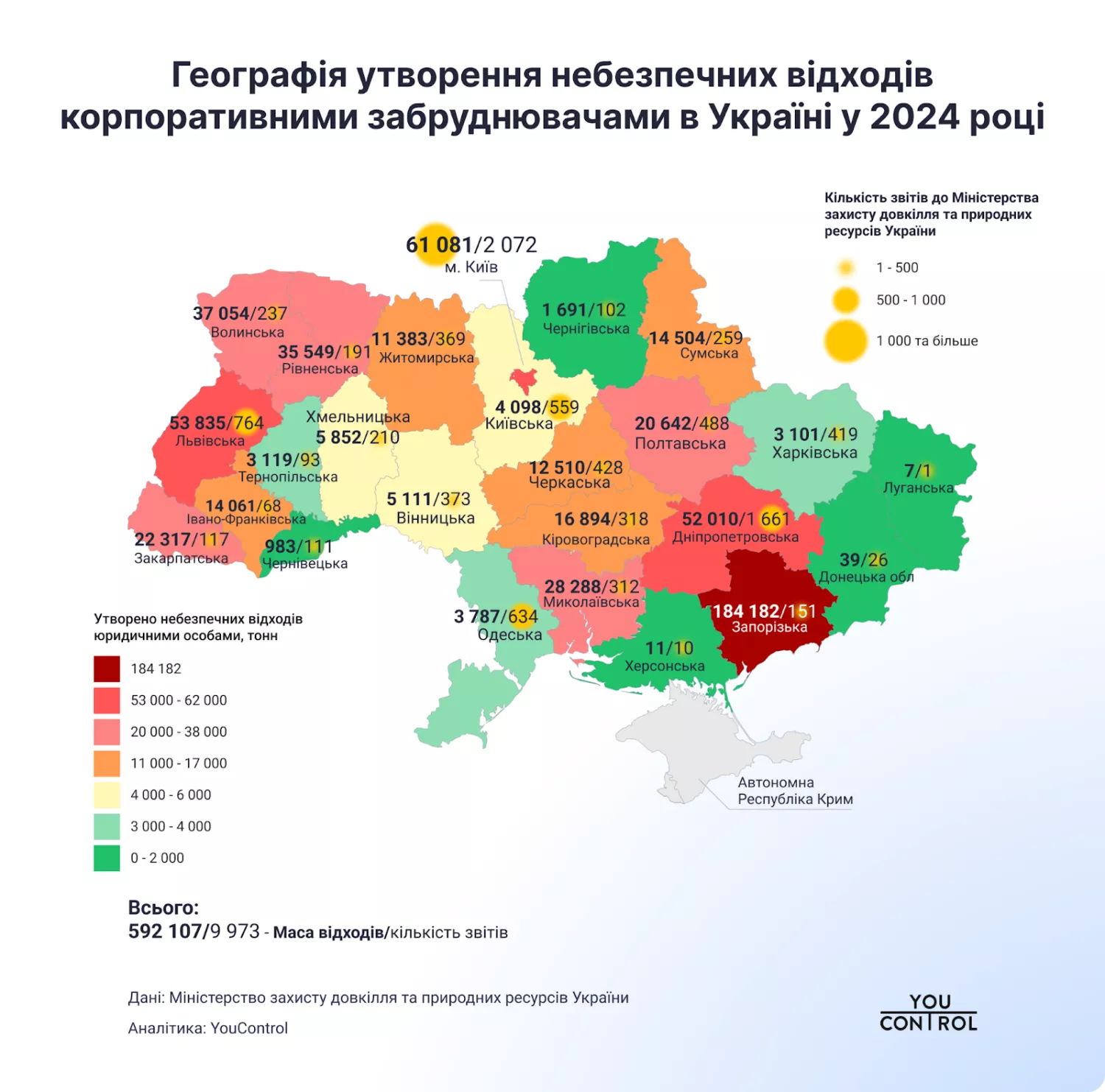YouControl investigation: Mykolaiv region is among the six regions with the largest volumes of hazardous waste
- News of Mykolaiv
-
•
-

- Alona Kokhanchuk
-
•
-
13:00, 26 June, 2025
In 2024, businesses in Ukraine generated more than 592,000 tonnes of hazardous waste. According to these data, Mykolaiv region accumulated more than 28,200 tonnes, while only 11 tonnes were officially recorded in Kherson region.
This is stated in a study by the YouControl Centre based on data from the Ministry of Environmental Protection and Natural Resources.
According to the analytical report, in 2024, Ukrainian legal entities generated more than 592,000 tonnes of hazardous waste. The distribution of these volumes by region is very uneven: some regions accumulate a significant share of toxic waste, while others hardly appear in statistical reports.
Zaporizhzhia region is the leader in hazardous waste generation, with 184,000 tonnes, which is more than 31% of the national figure. The main factors here are the concentration of heavy industry, in particular metallurgical and chemical production, as well as the energy sector, which traditionally generates the largest volumes of hazardous industrial sludge and other hazard class I-II waste.
The city of Kyiv ranks second with over 61,000 tonnes. The capital region de jure hosts not only large industrial complexes, but also logistics, medical, construction and service companies, which are also sources of toxic substances.
Instead, Mykolaiv region is among the top 10 regions in terms of toxic emissions. The main sources are medical facilities, the agricultural sector and certain industrial enterprises.
At the same time, Donetsk (39 tonnes), Kherson (11 tonnes), and Luhansk (7 tonnes) regions are at the opposite end of the regional ranking.
The reasons for this unevenness are not only in the level of industrial development, but also in the impact of the full-scale war. Due to the hostilities and occupation of part of the territory in Kherson region, there is no complete statistical reporting, which means that the actual amount of hazardous waste may be much higher.
Waste of destruction in Mykolaiv region
As of the end of 2023, Mykolaiv region is among the six regions most contaminated with demolition waste: it covers an area of more than half a million square metres of the region. Currently, some of this waste is stored at landfills, while others are still at the sites of destruction. This is harmful to the environment of the region: the destruction waste pollutes water, soil, and air. This raises the issue of their professional disposal and recycling to rebuild the region, as described in the article NikVesti «Raising from the ruins: How is Mykolaiv Oblast going to get rid of destruction waste?»
As of the end of November 2023, 57 hectares of the territory of Mykolaiv region were littered with construction waste caused by shelling. At the same time, the Department of Housing and Communal Services of Mykolaiv reported that by the end of 2023, the city should receive a special installation for shredding demolition waste.
In 2023, five temporary storage sites for demolition waste were identified in Mykolaiv region.
At the same time, a plant for processing construction waste generated by enemy shelling is to be built in Mykolaiv region. The plant is expected to process construction waste from two regions: Mykolaiv and Kherson, said Oleh Pylypenko, head of the Shevchenkove community. The Shevchenkove community also wants to deal with the disposal of hazardous demolition waste containing asbestos.
In particular, the Japanese international cooperation agency JICA, which plans to build a solid waste recycling plant in Mykolaiv, has donated about €5 million worth of construction waste processing equipment to the city. The project to build a construction waste recycling plant in Mykolaiv will start in early 2025, and staff training will begin in autumn. It is planned to be used for the needs of two more regions: Kherson and part of Kirovohrad.
As of 1 July 2024, almost 6,000 tonnes of construction waste was generated in Mykolaiv region due to Russian shelling.
Read also the article NikVesti «Eco-reconstruction of the south: where the waste of destruction goes and how Kharkiv's example is useful».



